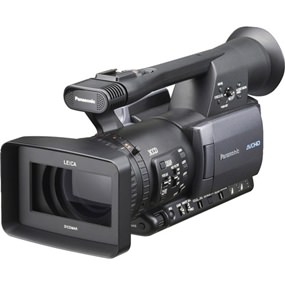More than likely, there is a book called Videography for Dummies, and if so, I’m sorry I stole the title!
Video is becoming more popular every day. Have a look in the window of a camera shop and you will find as many video cameras as there are still cameras. In addition, many still digital cameras also have a video capability as do many camera phones these days, so there is probably just as much video work being done as still.
The main difference between still and video lies in that still photography freezes a moment in time, while video photography tells a moving picture story.

For the still photographer it is a case of looking at the background and then working out the best combination of shutter speed and aperture. For the video photographer it is a case of working out the story line and then how to shoot the various elements in the story.
One of the ways you can pick the first time video user is the fact that the camera operator spends much time taking shots of still subjects. Having not made the mental adjustment from still photography, many minutes are taken up with a video of his wife standing by the front door of the hotel. That was a ‘still’ shot. With video, you film your wife checking out at the cashier’s desk, picking up her bags and walking towards the exit. Then you rush outside and the next footage is her coming out of the hotel and hailing a taxi. You have just shot a living ‘story’.
So where can you go to ‘learn’ this new art? Just as still photographers have photographs in books and magazines to study, the video photographer has a very ready source of informative examples to scrutinize. This is called TV! Sit down in front of the goggle box and see how the pros do it. Even the dreadful Thai soap operas have good cinematic technique! So start to look critically at technique. Where was the camera, relative to the subject? Did they “zoom” in or was it one far shot and another close up to follow? How many times did the cameraman actually use the inbuilt zoom? You may be amazed to see how seldom!
Here are a few more “rules” which can help you produce better video. Firstly, no rule is absolute, but you should have a good reason to break it. Having said that, let’s look at a few basics.
You should shoot people in full or three-quarter profile to let the viewers see both eyes. The one eyed effect does not look good. Again, look at TV. When two people are talking, the camera shoots over the shoulder of person one to shoot the second person face-on to the camera. When the first person replies, the shot is taken the other way, over the shoulder of the second person. You can also take shots of the person who is listening to the other speak. These are called ‘noddies’, because the person will be nodding while listening to the other speaker.
When shooting people, place the subject’s eyes one-third down from the top of the frame no matter the type of shot. It is that old rule of thirds again. Dead central is boring!
Another shot to avoid is one with large distances between people. Again, look at the soaps on TV. The people are really standing much closer than they would in real life (in each other’s personal space in fact), but if you have them a meter or so apart, you lose ‘contact’ in the video.
Focusing. This is a common problem with still cameras with Auto-Focus (AF), and 99 percent of video cameras are AF too. The magic eye in the camera focuses on a spot in the middle of the screen. When you are filming a couple, if the magic dot is not on one of the people, they will end up out of focus and the background perfectly sharp.
Application of these simple aspects of video photography will give you (and those who watch your videos) a much better end product, and a much more satisfying one for yourself to produce.




